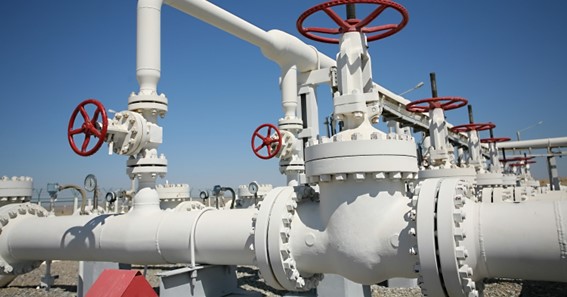The oil industry remains a vital player in the global economy, supplying energy for various purposes such as transportation, electricity generation, and manufacturing. However, the demand for oil has led to an increase in production activities that have resulted in environmental concerns. As such, there is a need for efficient and sustainable practices that can optimize oil recovery while minimizing the industry’s impact on the environment. One of these practices is through the use of oil recovery tanks.
Oil recovery tanks play a crucial role in processing crude oil by separating it from water and impurities. These tanks allow companies to recover more oil from their wells while reducing waste and protecting the environment. Additionally, they help companies increase their operational efficiency by enabling them to store and transport recovered oil safely. This article aims to explore how investing in oil recovery tanks can benefit both producers and consumers by optimizing operations and promoting sustainability.
Understanding the Role of Oil Recovery Tanks in the Production Process
The production process of petroleum extraction involves the use of specialized equipment designed to facilitate the separation and collection of extracted fluids from the wellbore. One key piece of equipment that plays a critical role in this process is an oil recovery tank. These tanks are designed to store and separate crude oil from other liquids, such as water or gas, that may be present in the extracted fluid.
When designing an oil recovery tank, several important considerations must be taken into account. The size and shape of the tank must be carefully chosen based on factors such as the volume of crude oil being produced and transported, as well as the specific requirements of the extraction site. Additionally, maintenance requirements must also be considered when designing these tanks. Proper cleaning procedures and regular inspections are essential for ensuring that they continue to function properly over time and do not contribute to any environmental hazards or safety risks. Ultimately, investing in high-quality oil recovery tanks can help optimize production efficiency while minimizing environmental impact.
Separating Oil from Water and Impurities
Efficient separation of oil from water and impurities is a crucial step in the process of maximizing the yield of crude oil. Oil recovery tanks play a critical role in this process by providing a controlled environment where the separation can take place effectively. The tanks are designed to allow for gravity separation, which relies on the fact that oil is lighter than water and will naturally rise to the surface when placed in a tank. This helps separate the two substances, making it easier to extract and recover as much oil as possible.
In addition to aiding in efficient separation, oil recovery tanks also offer cost savings for companies involved in crude oil production. By using these tanks, companies can minimize their operational costs by reducing the amount of waste produced during extraction. With better control over how much waste is generated, companies can reduce their disposal costs and environmental impact while still maximizing their output. Overall, investing in an effective oil recovery tank system can provide significant benefits for companies looking to optimize their crude oil extraction processes and improve profitability.
Increasing Production Efficiency
Improving the production efficiency of crude oil extraction requires implementing strategies that enhance yield without compromising on quality. One such strategy is the use of oil recovery tanks, which are designed to capture and store residual crude oil that remains in produced water after it has been separated from impurities. These tanks can significantly increase the overall production yield by recovering lost oil during the separation process, thereby reducing operational costs and increasing profits.
Oil recovery tanks come in different sizes and designs to fit various operational needs. They can be installed at different locations within a processing facility or out in the field near wellheads. The tank’s design facilitates the separation of oil from water through gravity settling, where oil rises to the top while water sinks to the bottom. Once separated, operators can collect and transport recovered oil for further treatment or sale as a valuable commodity. Overall, incorporating an effective recovery tank system into crude oil extraction operations can improve production optimization by minimizing losses while maximizing yields – all while reducing operational costs for increased profitability.
Reducing Environmental Impact
Mitigating the ecological footprint of crude oil extraction necessitates implementing conservation measures that prioritize environmental protection while still maintaining production efficiency. Green initiatives and sustainability measures are crucial in reducing the negative impact of oil recovery on the environment. One such measure is the use of oil recovery tanks, which can significantly reduce the amount of oil spilled into surrounding ecosystems.
Oil recovery tanks are designed to capture any spills or leaks that may occur during the extraction process. These tanks can hold large volumes of crude oil, preventing it from contaminating nearby water sources or soil. By using these tanks, companies can minimize their environmental impact and reduce cleanup costs associated with spills. Additionally, this approach promotes sustainable practices by ensuring that valuable resources are not wasted due to accidental spills or leaks. Overall, incorporating green initiatives like oil recovery tanks into crude oil extraction processes is essential for protecting our planet’s natural resources and promoting a more sustainable future for all.
In conclusion, reducing the environmental impact of crude oil extraction requires a concerted effort from all stakeholders involved in the industry. Implementing sustainability measures like green initiatives and utilizing tools like oil recovery tanks can go a long way in mitigating negative impacts on ecosystems and promoting responsible resource management practices. As we continue to rely on fossil fuels as an energy source, it is imperative that we prioritize environmental protection alongside production efficiency to ensure a sustainable future for generations to come.
Click Here – 10 Veg Restaurants to Order From if You Have Recently Given Up on Non-veg Food
The Smart Investment for Oil Companies
The adoption of advanced technologies and sustainable practices by oil companies can lead to increased profitability while minimizing negative impacts on the environment. One such technology that oil companies can invest in is the use of oil recovery tanks. These tanks are designed to capture residual oil from production streams, which would otherwise be lost and wasted. By implementing these tanks, companies can increase their overall oil recovery rates, resulting in increased profits. Additionally, the captured residual oil can be recycled or sold, providing additional revenue streams for the company.
Investing in oil recovery tanks requires a cost-benefit analysis to determine if it is a smart investment for a particular company. However, industry adoption of this technology has been increasing as more companies recognize its potential benefits. In addition to increased profitability, the use of these tanks also reduces environmental impact by preventing the release of excess pollutants into the atmosphere and waterways. As more pressure is placed on industries to reduce their carbon footprint and operate sustainably, investing in technologies like oil recovery tanks becomes not only financially beneficial but increasingly necessary for long-term success in the industry.
Frequently Asked Questions
What specific types of oil recovery tanks are available in the market?
Oil recovery tanks are specialized containers designed to store and transport oil from various sources. These tanks come in different materials such as steel, fiberglass, and plastic, each with its own set of features and benefits. Steel tanks are durable, resistant to fire and corrosion but can be expensive to maintain. Fiberglass tanks are lightweight, easy to install, and have good resistance to corrosion but may not be suitable for certain chemicals due to their chemical composition. Plastic tanks are inexpensive, lightweight, and resistant to most chemicals but may not be suitable for high-temperature applications. Despite their differences in material composition, all oil recovery tanks share the common benefit of providing a safe means of storing and transporting oil while reducing environmental risks associated with spills or leaks. The choice of which type of tank is best suited for a particular application will depend on factors such as cost, the specific material being stored or transported, ease of maintenance or installation among others.
How do oil recovery tanks compare in terms of cost-effectiveness with other production methods?
Cost-benefit analysis is an important aspect to consider when evaluating the efficiency of oil recovery tanks in comparison with other production methods. In terms of environmental impact, using oil recovery tanks can potentially reduce the amount of pollution and waste produced during the extraction process. However, the initial cost of acquiring and installing these tanks may be higher than other traditional methods. Therefore, a thorough cost-benefit analysis needs to be conducted to determine whether or not investing in oil recovery tanks would be a more cost-effective solution in the long run. Ultimately, it is essential to weigh both economic and environmental factors when deciding on which production method to utilize for optimal oil recovery.
What are some common challenges that oil companies face when implementing oil recovery tanks?
Oil companies encounter various operational considerations and environmental impact challenges when implementing oil recovery tanks. Operational considerations such as the size, type, and placement of the tank are crucial factors that can impact its effectiveness in recovering oil. The cost of maintenance, equipment, and staffing also add to the complexity of operating these tanks. Additionally, environmental impacts must be considered before installing an oil recovery tank. The potential for water contamination and soil degradation from accidental spills is a significant concern that requires careful planning and monitoring to minimize or prevent adverse effects on the environment. Therefore, implementing oil recovery tanks requires careful consideration of both operational and environmental factors to optimize their effectiveness while minimizing their negative impacts.
Are there any regulations or standards in place regarding the use of oil recovery tanks?
Regulations and compliance play a crucial role in the use of oil recovery tanks. Governments across the world have set up guidelines and standards to ensure that these tanks are installed, operated and maintained safely. Compliance with these regulations is mandatory for all oil companies to minimize environmental impact and promote sustainability. These regulations cover various aspects such as site selection, tank design and construction, operation and maintenance procedures, spill prevention measures, emergency response plans, monitoring systems, record-keeping requirements, etc. Failure to comply with these regulations can result in hefty fines or even suspension of operations. The purpose of these regulations is not only to minimize the risk of spills but also to ensure that any potential spills are contained quickly and efficiently to avoid long-term environmental damage.
How can oil companies ensure the proper maintenance and upkeep of their oil recovery tanks to maximize their benefits?
Maintenance strategies and tank inspection protocols are critical components of ensuring the proper upkeep of oil recovery tanks. Oil companies must develop a comprehensive maintenance plan that includes routine inspections, cleaning procedures, and repair strategies to address any issues promptly. Regular inspections should be conducted by trained personnel who can identify potential problems such as corrosion, leaks or other damage that may compromise the effectiveness of the tank. It is also important for oil companies to adhere to established regulations and standards related to tank maintenance and safety. By implementing these measures, oil companies can maximize the benefits of their oil recovery tanks while minimizing risks associated with improper maintenance practices.
Conclusion
In conclusion, oil recovery tanks play a crucial role in the production process of oil. They assist in separating oil from water and impurities, thus increasing production efficiency while reducing the environmental impact. Oil recovery tanks are a smart investment for oil companies looking to optimize their production outputs while minimizing their environmental footprint.
By investing in high-quality oil recovery tanks, companies can achieve better yields while saving on operational costs associated with waste disposal and environmental remediation. Additionally, these tanks provide an effective solution for addressing growing concerns over the impact of petroleum exploration and production on the environment. Ultimately, it is clear that the benefits of using oil recovery tanks outweigh any initial investment costs, making them a worthwhile consideration for any company involved in the production of petroleum products.






